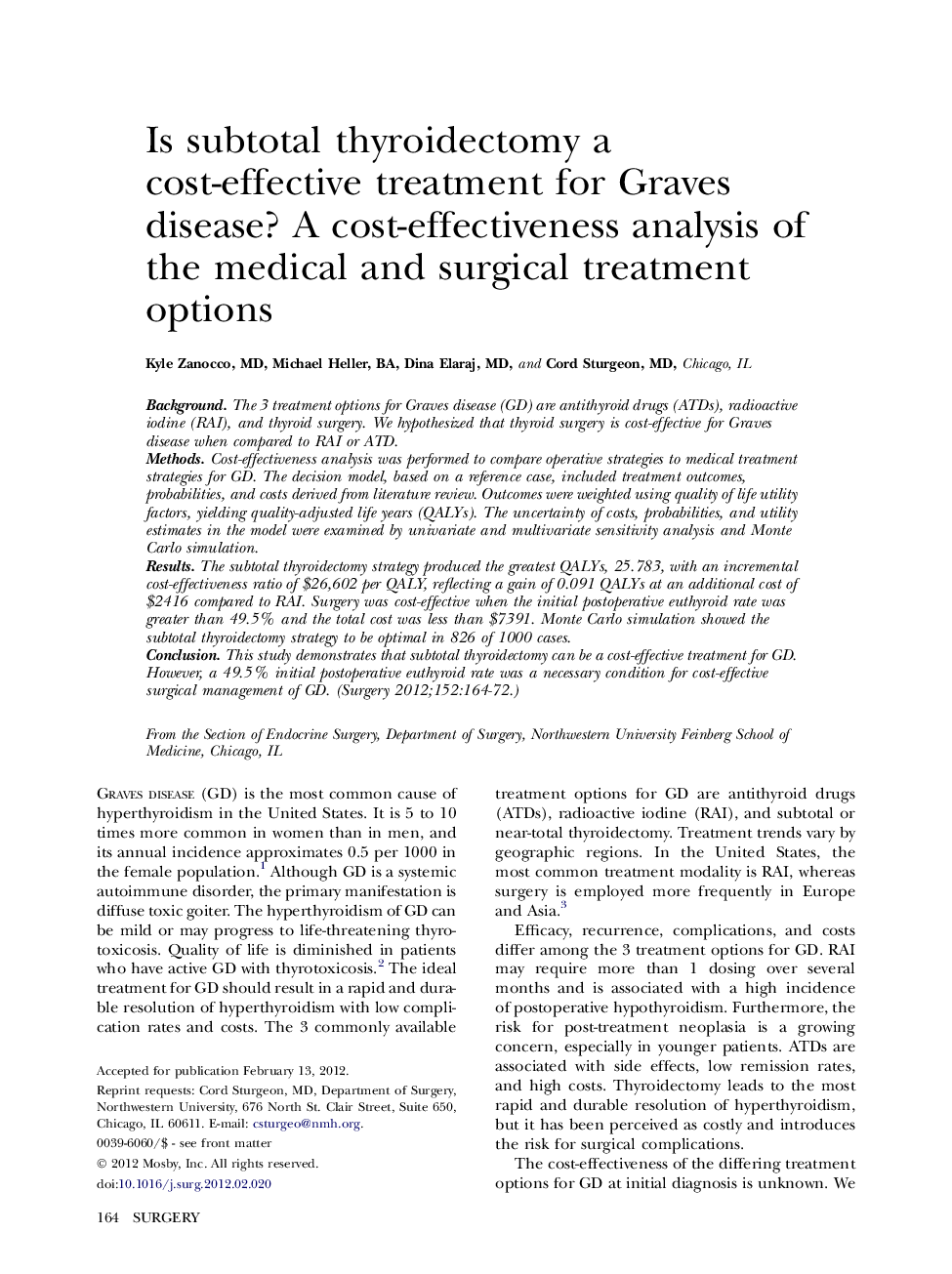| Article ID | Journal | Published Year | Pages | File Type |
|---|---|---|---|---|
| 4308279 | Surgery | 2012 | 9 Pages |
BackgroundThe 3 treatment options for Graves disease (GD) are antithyroid drugs (ATDs), radioactive iodine (RAI), and thyroid surgery. We hypothesized that thyroid surgery is cost-effective for Graves disease when compared to RAI or ATD.MethodsCost-effectiveness analysis was performed to compare operative strategies to medical treatment strategies for GD. The decision model, based on a reference case, included treatment outcomes, probabilities, and costs derived from literature review. Outcomes were weighted using quality of life utility factors, yielding quality-adjusted life years (QALYs). The uncertainty of costs, probabilities, and utility estimates in the model were examined by univariate and multivariate sensitivity analysis and Monte Carlo simulation.ResultsThe subtotal thyroidectomy strategy produced the greatest QALYs, 25.783, with an incremental cost-effectiveness ratio of $26,602 per QALY, reflecting a gain of 0.091 QALYs at an additional cost of $2416 compared to RAI. Surgery was cost-effective when the initial postoperative euthyroid rate was greater than 49.5% and the total cost was less than $7391. Monte Carlo simulation showed the subtotal thyroidectomy strategy to be optimal in 826 of 1000 cases.ConclusionThis study demonstrates that subtotal thyroidectomy can be a cost-effective treatment for GD. However, a 49.5% initial postoperative euthyroid rate was a necessary condition for cost-effective surgical management of GD.
